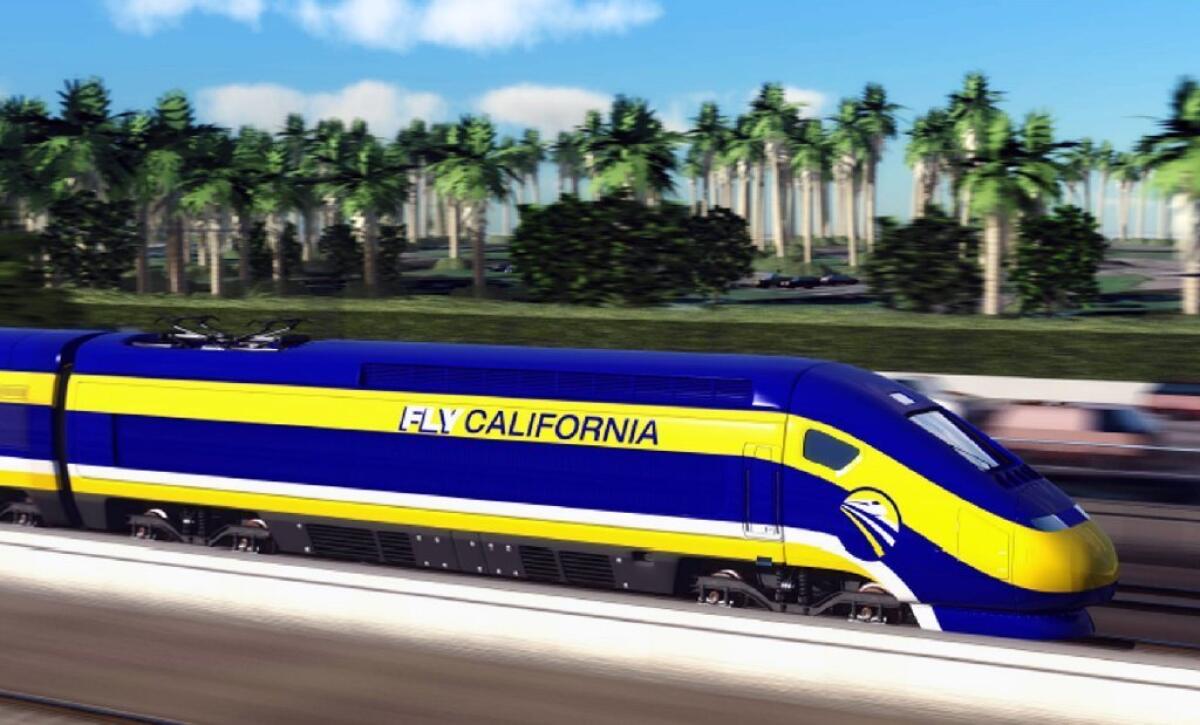Editorial: Building L.A. County segment would accelerate bullet train project

The âtrain to nowhereâ is beginning to look a bit more like a train to somewhere. Flush with $250 million this year and the promise of billions more from the stateâs cap-and-trade program, the California High Speed Rail Authority has proposed accelerating plans to build the segment of the bullet train that will run through Los Angeles County. Officials intend to begin environmental analysis this summer on a train that could travel from Palmdale to Burbank in 15 minutes, even as construction continues on the first segment in the Central Valley. This is a good plan that could help legitimize the beleaguered project and could ultimately help get commuters out of their cars.
Critics have derided the project as a âtrain to nowhereâ because the authority chose to begin construction with the Fresno-to-Bakersfield segment. While the Central Valley certainly isnât nowhere â itâs a rapidly growing population center that deserves a good transit network â there was understandable frustration that urban areas with plenty of ready riders would have to wait for the benefits of high speed rail.
A Palmdale-to-Burbank segment addresses those concerns in two important ways. It could provide relief from one of Southern Californiaâs worst commutes â Metrolink takes 90 minutes and driving takes just as long â while also reducing car trips and thereby cutting greenhouse gas emissions. And it could do so in less than a decade. Whatâs more, by building in the Central Valley and L.A. Basin concurrently, the authority increases the likelihood that the project will have the political support to get funded and that the full-fledged L.A.-to-San Francisco bullet train line will ultimately be built.
The new focus on the L.A. segment and other urban projects helped convince state legislators, like incoming Senate President Pro Tem Kevin de LeĂłn (D-Los Angeles), to allocate $250 million this year in cap-and-trade money â basically, greenhouse gas emission fees charged to polluters â for high speed rail, and, more importantly, to set aside 25% of the cap-and-trade money collected in future years for the project. That deal will provide billions of dollars for the bullet train in the coming years and help keep the project moving while voter-approved bonds are tied up in lawsuits. Legislators also insisted that the authority deliver more reductions in greenhouse gas emissions in urban areas as quickly as possible.
To be sure, the bullet train still has its challenges. The total cost is expected to be $68 billion. Congressional Republicans are trying to block federal funding for the project, and there are numerous lawsuits pending, including one filed this month that alleges the train isnât a valid use of cap-and-trade funds because it wonât help reduce greenhouse gas emissions. California leaders this year doubled down on the bullet train and theyâve wisely pushed to speed development of the project in L.A. Now they need rigorous oversight to keep the bullet train on track.
More to Read
A cure for the common opinion
Get thought-provoking perspectives with our weekly newsletter.
You may occasionally receive promotional content from the Los Angeles Times.










